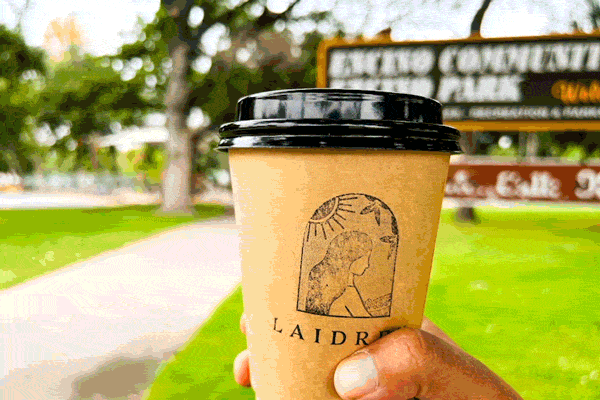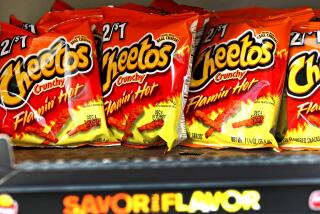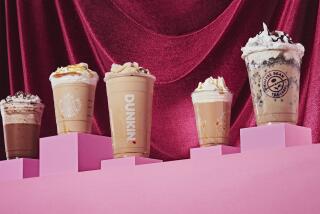Young Kids Think Decaf Is for Drips
- Share via
WASHINGTON — When the parents are there, they call the shots: Make that a decaf.
But when the kids are on their own--the young kids, the preteens, the middle-schoolers--forget decaf. Bring on the Frappuccino! Bring on the latte! Bring on the coffee, that bitter draft of maturity. Just make sure to put lots and lots of sugar in it.
“It’s crazy,” says Brian White, shift supervisor at the Starbucks kiosk at the Chevy Chase Pavilion here. “I have poured lattes and stuff for kids like 10. I say, ‘Do you know what you’re doing?’ They say, ‘Yeah!’ Then I see them flying around the mall.”
Hang out in an upscale coffee emporium these days and you’re likely to come across at least a few kids sipping $3 lattes. Coffee--the dark stuff that so many college students trained themselves to like in order to get through early-morning classes, for decades a drink that seemed to shout “middle age”--now spans the generations.
“I see a lot of freshmen walking around with 7-Eleven cups of coffee,” says David Wegener, an 18-year-old senior at Langley High School in McLean, Va. He is sitting outside a Starbucks, along with his 13-year-old sister, Merisa. She’s drinking something brown and icy, but she insists (while her mother watches) that she sticks with decaf.
What happened to childhood? What happened to innocence? What happened to Hawaiian Punch and Kool-Aid?
OK, so maybe not every kid is drinking coffee. Underage coffee consumption isn’t exactly a societal blight. Maybe it isn’t a sign that Starbucks has plans for world domination and will soon be selling House Blend baby formula. Still, adults may begin to wonder what they have left to call their own.
Ted Lingle, director of the Specialty Coffee Assn. of America, has a 12-year-old daughter devoted to frozen mocha drinks and says he sees a milky silver lining to the mini-trend.
“If you look at it, there’s so much milk, relative to the amount of coffee--I’d rather have her drink this than a Coke,” he says. “Nutritionally, they’re much better for kids.”
The coffee industry has been tracking consumption since the ‘50s with its Winter Drinking Study. According to Robert Nelson, National Coffee Assn. president, the number of kids under 15 who drink coffee is extremely low--fewer than 2% of them--and has remained relatively stable for years. But Lingle thinks the statistics, which are gathered by asking Americans what they drank the day before, are missing something.
“You see a lot of anecdotal evidence that young teenagers are frequenting coffee cafes,” Lingle says. “The industry’s really come up with products that appeal to younger people.”
Starbucks spokesman Chris Gimbl says, “We don’t market specifically to any single group, including kids and teenagers.” If the sweetened, icy drinks appeal to kids--well, it’s just an act of beverage fate.
What about all the caffeine? Won’t it stunt their growth or something?
According to pediatrician Susan Baker, chairwoman of the American Academy of Pediatrics’ committee on nutrition, “We don’t think [coffee] is part of a healthful diet, and we certainly don’t encourage its use.” But, she says, there has been no evidence that caffeine--within the range most kids consume--harms them.
Back at the Starbucks kiosk at the Chevy Chase Pavilion, manager Chris Kaplinski has dropped by for a quick cup. She grew up drinking coffee with her Italian relatives but knows that some parents don’t like to think their kids have a java habit.
“We have children’s beverages, juice and milk and cocoa,” she says. “We don’t want to encourage kids to drink coffee.”
More to Read
Sign up for The Wild
We’ll help you find the best places to hike, bike and run, as well as the perfect silent spots for meditation and yoga.
You may occasionally receive promotional content from the Los Angeles Times.






